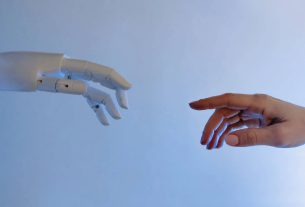Artificial Intelligence, or AI for short, is a buzzword that we hear a lot these days. But what exactly is AI, and how is it relevant to our daily lives? In this article, we will provide a non-technical introduction to AI, explaining what it is, how it works, and why it matters.
At its core, AI is the ability of machines to mimic human intelligence. It involves creating computer programs that can perform tasks that normally require human intelligence, such as recognizing speech, making decisions, and learning from experience. AI systems can be used for a wide range of tasks, from recommending movies to detecting fraud in financial transactions.
One of the most important aspects of AI is machine learning. Machine learning is a type of AI that involves teaching computers to learn from data, rather than programming them to do specific tasks. This allows AI systems to adapt and improve over time, as they are exposed to more data.
There are three main types of machine learning: supervised learning, unsupervised learning, and reinforcement learning. In supervised learning, the AI system is given a set of labeled data and is trained to recognize patterns in the data. For example, an AI system might be trained to recognize different types of animals based on a dataset of labeled images. In unsupervised learning, the AI system is given unlabeled data and must find patterns on its own. Finally, in reinforcement learning, the AI system learns by trial and error, receiving feedback in the form of rewards or punishments as it tries to achieve a specific goal.
Another important aspect of AI is deep learning, which is a type of machine learning that involves training neural networks. Neural networks are a type of AI that are modeled after the structure of the human brain. They are used in tasks such as image recognition, natural language processing, and speech recognition.
So why does AI matter? There are a number of reasons. For one, AI has the potential to automate many routine and mundane tasks, freeing up humans to focus on more creative and strategic work. AI can also improve the accuracy and speed of many tasks, from medical diagnosis to financial analysis. In addition, AI can help us understand and solve complex problems that were previously beyond our capabilities.
Of course, there are also potential drawbacks to AI. One concern is that AI systems may become too powerful, making decisions that have negative consequences for society. Another concern is that AI systems may be biased, reflecting the biases of the data they were trained on. It’s important to be aware of these potential issues and to work to mitigate them as AI becomes more pervasive in our lives.
In conclusion, AI is the ability of machines to mimic human intelligence, and machine learning is a key part of AI that involves teaching computers to learn from data. There are three main types of machine learning: supervised learning, unsupervised learning, and reinforcement learning. Deep learning is a type of machine learning that involves training neural networks. AI has the potential to automate many tasks, improve accuracy and speed, and help solve complex problems, but it also comes with potential drawbacks. By understanding the basics of AI, we can appreciate its potential and be better prepared to address its challenges.




